Presentation
Chronic neck pain
Patient Data
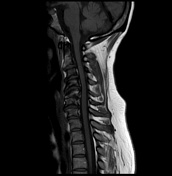

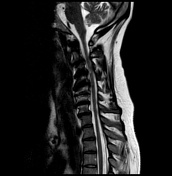

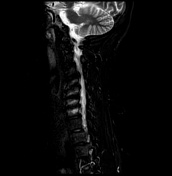

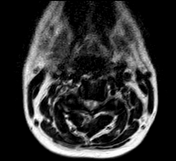



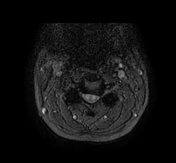

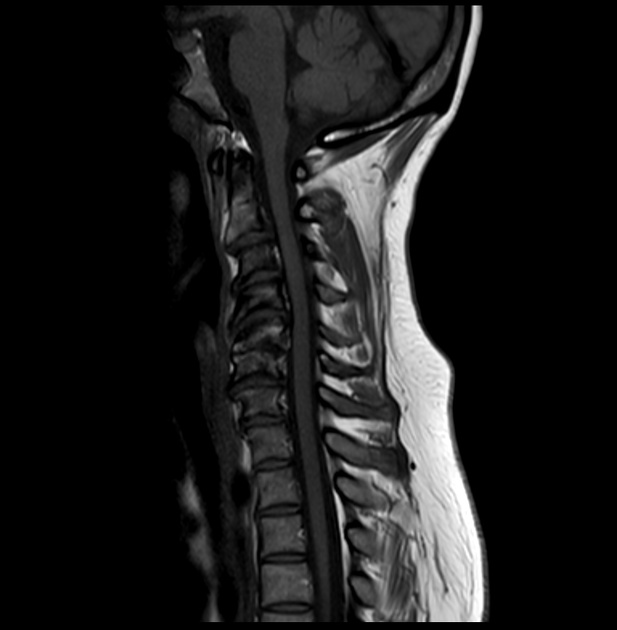
Severe cervical degenerative changes that cause obliteration of the subarachnoid space greater than 50% at the C2-C4 levels without deformity of the spinal cord.
There are foci of increased T2 signal bilaterally in the central grey matter at the level of the C3-C4 disc (snake eye sign, also known as owl-eyes sign) suggestive of compressive myelopathy.
Case Discussion
This case illustrates the typical appearance of the cervical cord owl-eyes sign also known as snake-eyes sign secondary to chronic compressive myelopathy with kyphotic deformity.
It's believed to represent a wide range of pathological changes resulting from spinal cord compression, from reversible edema and inflammation to irreversible ischemia and cystic necrosis.
Case courtesy of Dra. Ana Cecilia Sánchez González.




 Unable to process the form. Check for errors and try again.
Unable to process the form. Check for errors and try again.